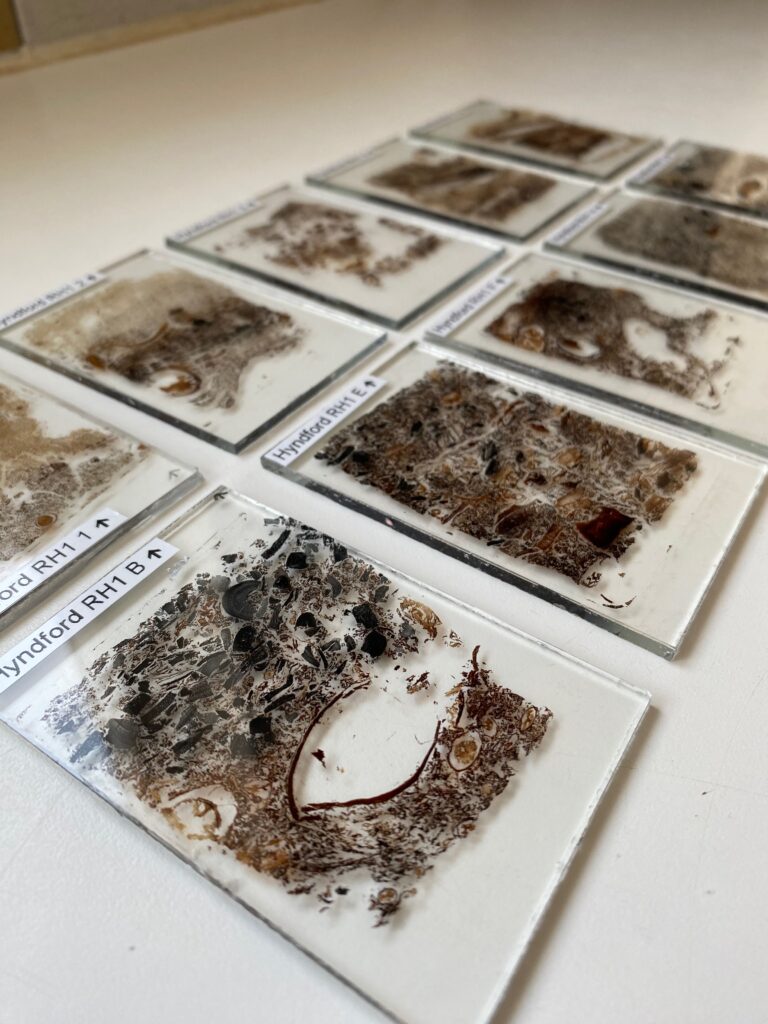Terrascope had the privilege to work on 40 Kubiena samples from the prestigious Neolithic site of Hyndford, UK for AOC Archaeology Group to produce soil thin sections for micromorphology analysis. “Nestled within a bend in the River Clyde, archaeological monitoring works at a quarry uncovered a remarkable discovery: a prehistoric settlement concealed under 2.5m of peat. The settlement was a sub-circular fenced enclosure with brushwood pathways and surfaces linking three large timber roundhouses. Peat had preserved these structures in an astonishing condition, along with rare artefacts including shale and copper-alloy bracelets and two wooden wheels.” (from https://insitu.org.uk/2023/03/28/hyndford-roundhouses/).
The 40 samples were taken in Kubiena tins. They were slowly air-dried at room temperature to minimise cracks and distorsions. When the samples were completely dry, polyester clear resin was slowly pored on the samples, waiting for the resin to fill the samples and rise up by capillarity. The samples were placed into the vacuum chamber at low pressure, then placed in a heated and ventilated cabinet. The hardened samples were sliced into slabs. We observed that the impregnation was not very good on these very organic samples, so we had to do surface impregnation on several samples.
The resulting micromorphological thin sections, despite being distorted because of their organic content, are very nice. On some the cultural layer is clearly visible and we believe their micromorphology analysis will bring a lot of informations on the domestic and economic life during Neolithic at Hyndford.








